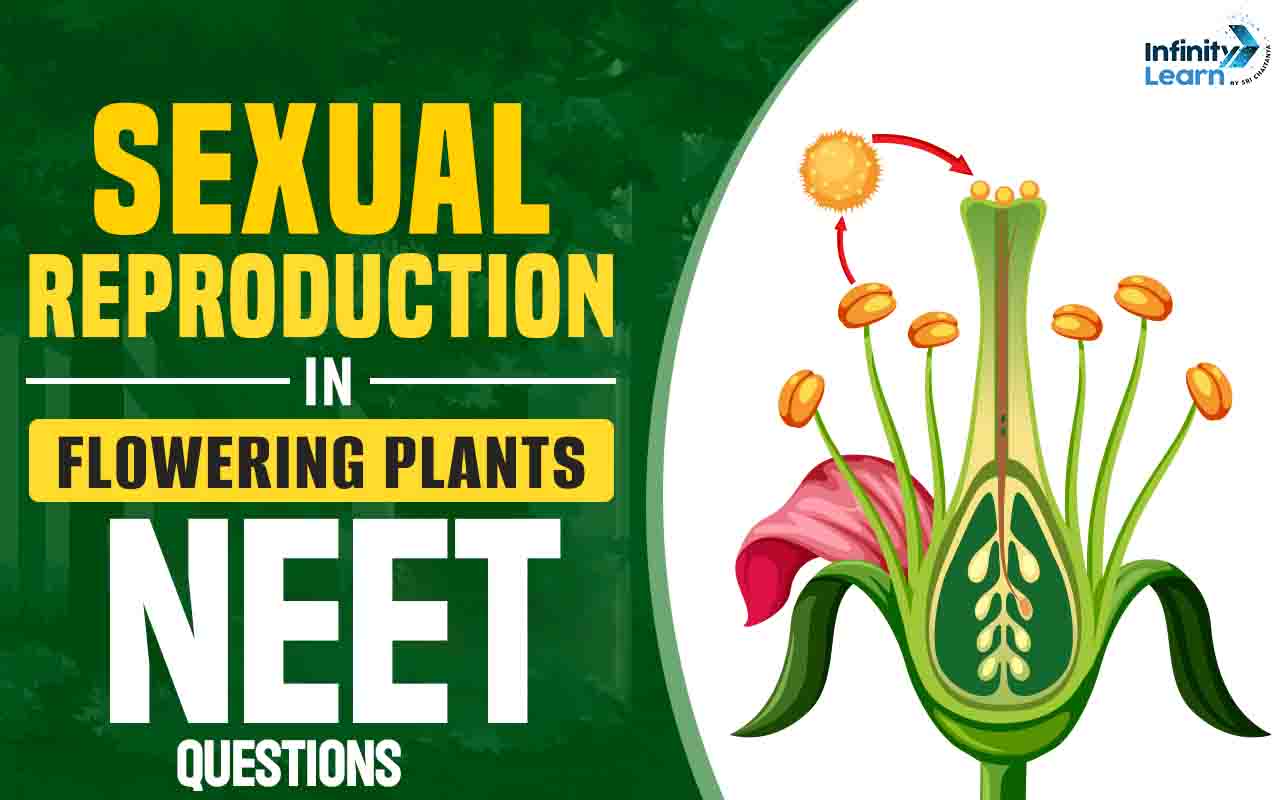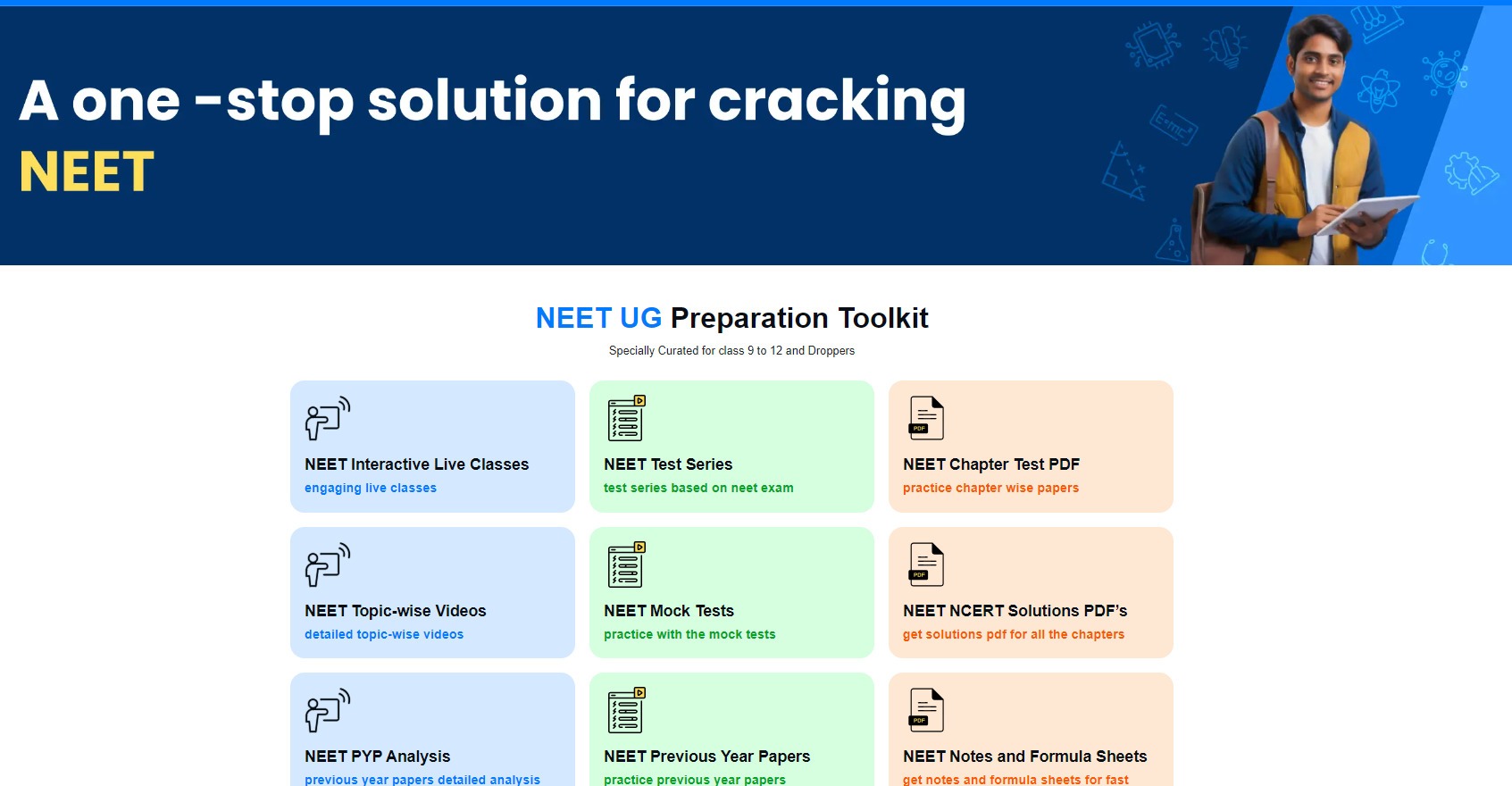Table of Contents
Sexual reproduction in flowering plants is a crucial topic for students preparing for the NEET exam. It covers important concepts such as pollination, fertilization, and the development of seeds and fruits, all of which are commonly featured in NEET questions. Understanding this chapter thoroughly is key to solving sexual reproduction in flowering plants important NEET questions with accuracy. Many students look for previous year NEET questions (PYQs) and mock tests to practice. These resources, along with sexual reproduction in flowering plants NEET questions with answers, can greatly help in revision. Additionally, mock tests and quizzes are effective for testing one’s knowledge and improving speed. For comprehensive preparation, NEET aspirants often refer to sexual reproduction in flowering plants NEET questions and answers PDFs, which provide a structured way to study and revise. Preparing with a mix of MCQs and previous questions will boost your confidence to tackle sexual reproduction in flowering plants NEET questions.
Sexual Reproduction in Flowering Plants NEET Questions with Answers
To help students prepare effectively, we have compiled a list of important NEET questions with answers. These Sexual Reproduction in Flowering Plants questions are designed to cover various aspects of the topic, including pollination, fertilization, and seed formation. By practicing these questions, students can gain a clear understanding of the concepts and improve their chances of scoring well. Below are some Sexual Reproduction in Flowering Plants NEET Questions with answers to guide your preparation. Each question is crafted to give you a real exam-like experience, ensuring you’re well-prepared for NEET 2024.

Top 10 Important Sexual Reproduction in Flowering Plants NEET Questions and Answers
Here are the 10 most important Sexual Reproduction in Flowering Plants NEET questions and answers that will help you with your preparation for the NEET 2024 exam.
Question 1: Which of the following statements is NOT true?
- A. Tapetum helps in the dehiscence of anther
- B. Exine of pollen grains is made up of sporopollenin
- C. Most species of pollen grains can cause allergic reactions
- D. None of the above
Answer: The correct answer is A.
Explanation: Tapetum primarily nourishes developing pollen, not directly involved in anther dehiscence. The rest of the options are true about pollen grains and their structure.
Question 2: Pollination in water hyacinth and water lily is brought about by the agency of
- A. Bats
- B. Water
- C. Molluscs
- D. Insects or Wind
Answer: The correct answer is D.
Explanation: Water hyacinth and water lily do not use water for pollination. Instead, insects or wind assist in pollinating these plants.
Question 3: In the majority of the angiosperms, ___
- A. A small central cell is present in the embryo sac
- B. The egg has a filiform apparatus
- C. There are many antipodal cells
- D. Reduction division occurs in the megaspore mother cells
Answer: The correct answer is D.
Explanation: In angiosperms, the megaspore mother cell undergoes meiosis (reduction division) to form the functional megaspore.
Question 4: Attractants and rewards are required for _________
- A. Hydrophily
- B. Anemophily
- C. Entomophily
- D. All of the above
Answer: The correct answer is C.
Explanation: Entomophily (pollination by insects) involves the use of attractants and rewards like nectar to lure pollinators, unlike hydrophily and anemophily.
Question 5: The morphological nature of the edible part of the coconut is ______
- A. Endosperm
- B. Ectoderm
- C. Cotyledon
- D. Option d
Answer: The correct answer is A.
Explanation: The edible part of the coconut is its endosperm, which provides nutrition.
Question 6: A dioecious flowering plant prevents both
- A. Autogamy and Geitonogamy
- B. Autogamy and Xenogamy
- C. Geitonogamy and Xenogamy
- D. None of the above
Answer: The correct answer is A.
Explanation: In dioecious plants, male and female flowers are on different plants, preventing both self-pollination (autogamy) and pollination between flowers on the same plant (geitonogamy).
Question 7: Functional megaspore in an angiosperm develops into _____
- A. Endoderm
- B. Ovule
- C. Embryo
- D. Embryo sac
Answer: The correct answer is D.
Explanation: The functional megaspore undergoes mitosis to develop into the female gametophyte, also known as the embryo sac, in angiosperms.
Question 8: Which of the following may require pollinators, but is genetically similar to autogamy?
- A. Cleistogamy
- B. Xenogamy
- C. Geitonogamy
- D. None of the above
Answer: The correct answer is C.
Explanation: Geitonogamy is the transfer of pollen from one flower to another on the same plant. It requires a pollinator but is genetically similar to self-pollination (autogamy).
Question 9: The ovule of an angiosperm is technically equivalent to ______
- A. Megaspore
- B. Megasporangium
- C. Megaspore mother cell
- D. None of the above
Answer: The correct answer is B.
Explanation: In angiosperms, the ovule is equivalent to the megasporangium, which contains the megaspore mother cell.
Question 10: Seed formation without fertilization in flowering plants involves the process of _____
- A. Apomixis
- B. Budding
- C. Sporulation
- D. Somatic hybridization
Answer: The correct answer is A.
Explanation: Apomixis is a form of asexual reproduction where seeds are formed without fertilization.

Sexual Reproduction in Flowering Plants NEET Questions PYQ (Appeared in NEET 2024)
To practice effectively, try solving sexual reproduction in flowering plants NEET previous questions appeared in NEET 2024 exam:
Question 1: Identify the set of correct statements:
- A. The flowers of Vallisneria are colourful and produce nectar.
- B. The flowers of water lily are not pollinated by water.
- C. In most of water-pollinated species, the pollen grains are protected from wetting.
- D. Pollen grains of some hydrophytes are long and ribbon-like.
- E. In some hydrophytes, the pollen grains are carried passively inside water.
Choose the correct answer from the options given below:
- A) C, D and E only
- B) A, B, C and D only
- C) A, C, D and E only
- D) B, C, D and E only
Answer Explanation:
The correct answer is B, C, D, and E. Flowers of Vallisneria are not colourful and do not produce nectar. Water lilies are pollinated by insects, not by water. The other options correctly describe water-pollinated species and their pollen characteristics.
Question 2: In which of the following sets of families, the pollen grains are viable for months?
- A) Solanaceae, Poaceae and Liliaceae
- B) Brassicaceae, Liliaceae and Poaceae
- C) Rosaceae, Liliaceae and Poaceae
- D) Leguminosae, Solanaceae and Rosaceae
Answer Explanation:
The correct answer is D. In families such as Leguminosae, Solanaceae, and Rosaceae, pollen grains remain viable for longer durations, sometimes months.
Question 3: Transfer of pollen grains from anther to stigma of another flower of the same plant is known as:
- A) Geitonogamy
- B) Xenogamy
- C) Autogamy
- D) Cleistogamy
Answer Explanation:
The correct answer is A. Geitonogamy refers to the transfer of pollen from the anther to the stigma of another flower on the same plant.
Question 4: In angiosperms, the correct sequence of events in the formation of female gametophyte in the ovule is:
- (A) 3 successive free nuclear divisions of the functional megaspore.
- (B) Degeneration of 3 megaspores.
- (C) Meiotic division in the megaspore mother cell.
- (D) Migration of 3 nuclei towards each pole.
- (E) Formation of the wall resulting in a seven-celled embryo sac.
Choose the correct answer from the options given below:
- A) (A), (B), (C), (D), (E)
- B) (C), (E), (A), (D), (B)
- C) (B), (C), (A), (D), (E)
- D) (C), (B), (A), (D), (E)
Answer Explanation:
The correct answer is D. The correct sequence begins with the meiotic division in the megaspore mother cell, followed by the degeneration of megaspores and other stages as listed.
Question 5: What is the function of tassels in the corn cob?
- A) To trap pollen grains
- B) To disperse pollen grains
- C) To protect seeds
- D) To attract insects
Answer Explanation:
The correct answer is A. Tassels on corn cobs are designed to trap pollen grains, ensuring successful pollination.
Question 6: Large, colourful, fragrant flowers with nectar are seen in:
- A) Bird pollinated plants
- B) Bat pollinated plants
- C) Wind pollinated plants
- D) Insect pollinated plants
Answer Explanation:
The correct answer is D. Insect-pollinated plants often have large, colourful, and fragrant flowers to attract insects.
Question 7: In angiosperms, the haploid, diploid, and triploid structures of a fertilized embryo sac sequentially are:
- A) Antipodals, synergids, and primary endosperm nucleus
- B) Synergids, Zygote, and Primary endosperm nucleus
- C) Synergids, antipodals, and Polar nuclei
- D) Synergids, Primary endosperm nucleus, and Zygote
Answer Explanation:
The correct answer is B. In angiosperms, synergids are haploid, the zygote is diploid, and the primary endosperm nucleus is triploid.
Question 8: Assertion and Reason:
Assertion A: In gymnosperms, the pollen grains are released from the microsporangium and carried by air currents.
Reason R: Air currents carry the pollen grains to the mouth of the archegonia where the male gametes are discharged, and the pollen tube is not formed.
Choose the correct answer from the options given below:
- A) Both A and R are true but R is NOT the current explanation of A
- B) A is true but R is false
- C) A is false but R is true
- D) Both A and R are true and R is the correct explanation of A
Answer Explanation:
The correct answer is B. While the pollen grains are carried by air currents in gymnosperms, they are not delivered directly to the mouth of the archegonia without the pollen tube.






